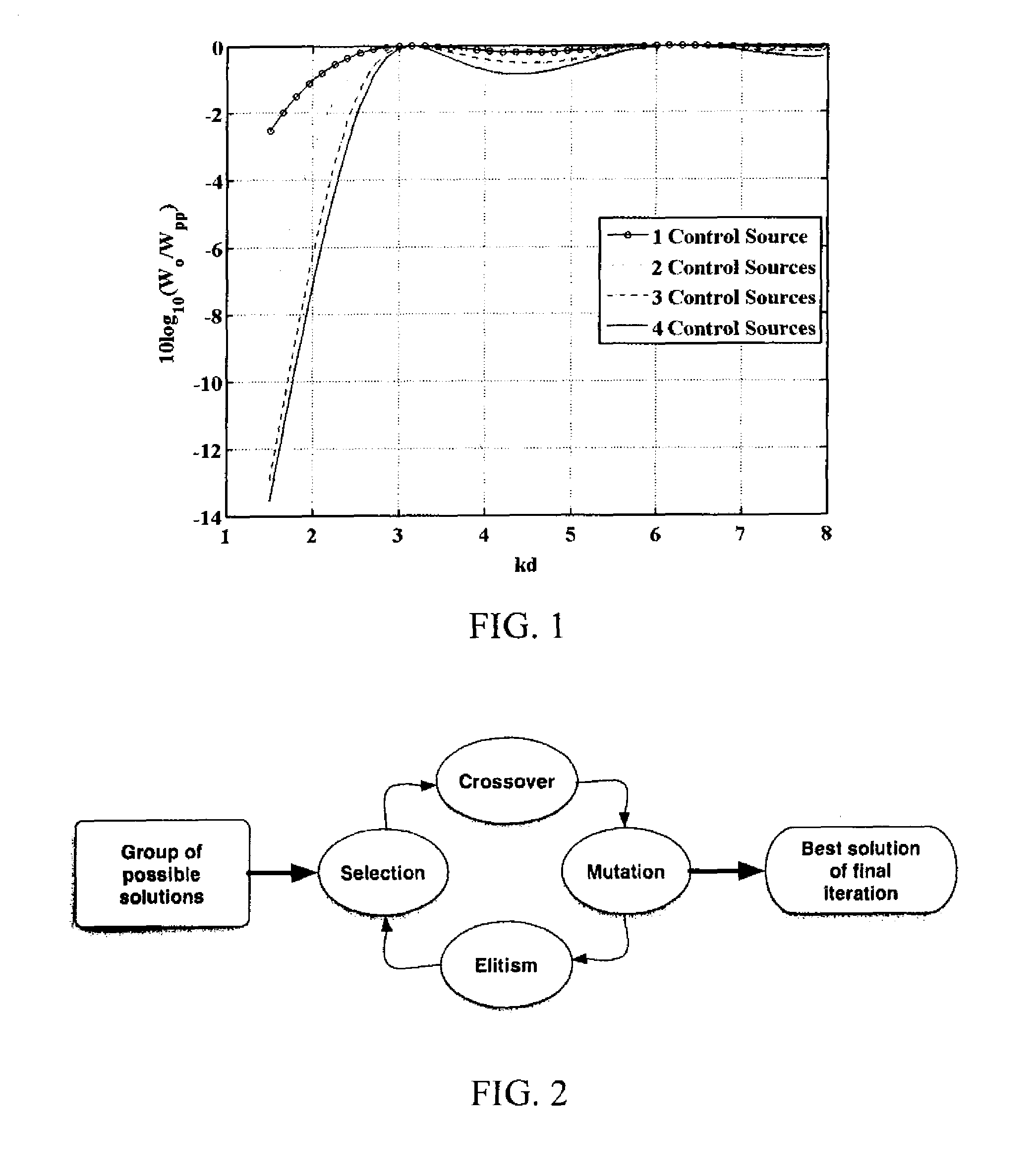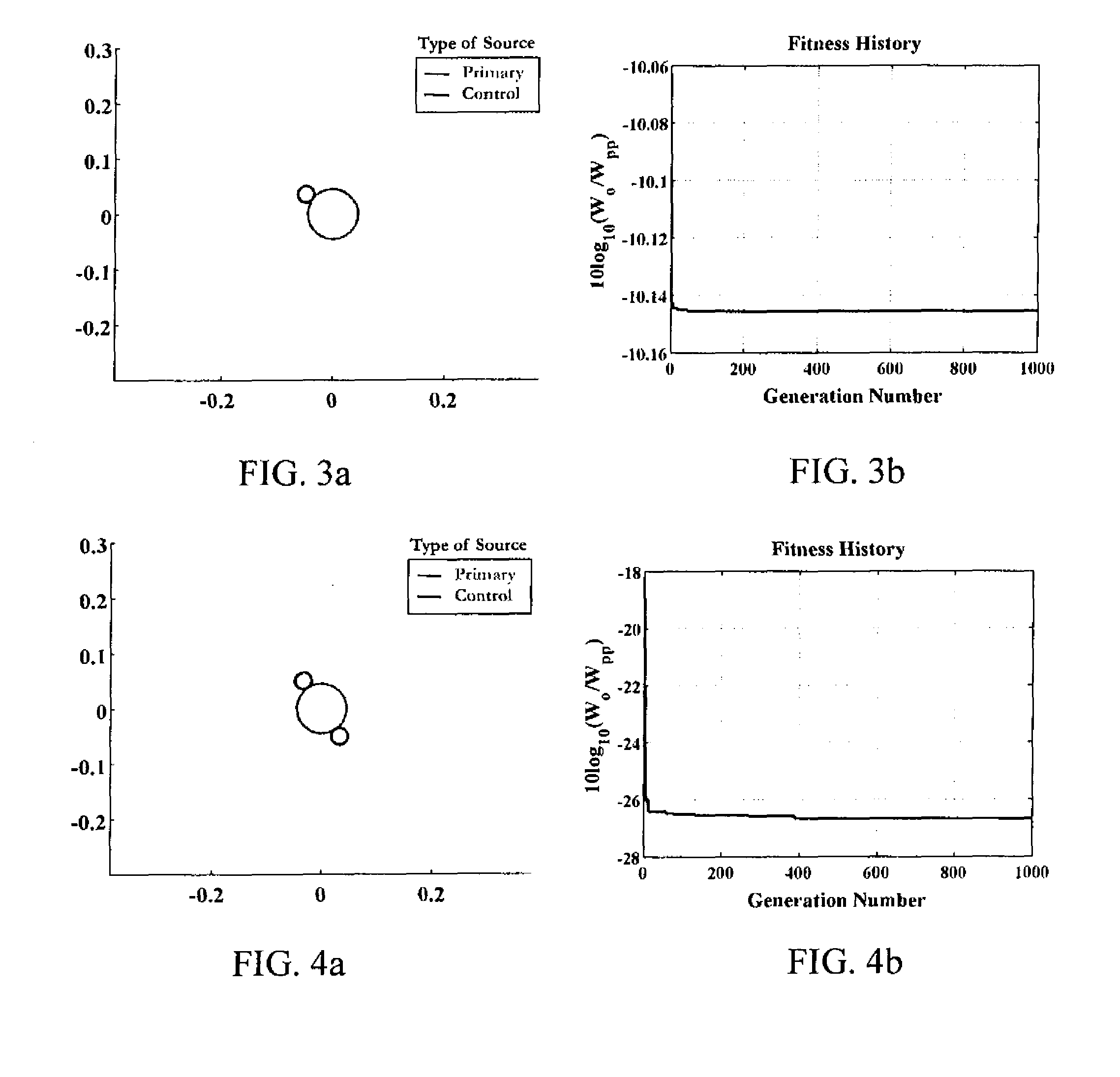Multi-Channel Active Control System and Methods for the Reduction of Tonal Noise from an Axial Fan
a control system and axial fan technology, applied in adaptive control, process and machine control, instruments, etc., can solve the problems of low frequency tonal content of the fan's radiation, low efficiency of passive techniques, and low efficiency of loud cooling systems
- Summary
- Abstract
- Description
- Claims
- Application Information
AI Technical Summary
Benefits of technology
Problems solved by technology
Method used
Image
Examples
example 1
Single Control Source
[0083]When a single control source is used in the algorithm, the control source gets as close to the primary source as possible. This is what should be expected for a single control source since the radiated power is a function of frequency and distance. FIG. 3a shows the design space that the algorithm is allowed to explore and the final control source configuration. The space that the algorithm is allowed to search is based upon the realistic size of a computer enclosure. Locations of the sources are only important relative to each other and could be rotated without affecting the results. The fitness history shown in FIG. 3b demonstrates that the optimized sound power of the entire system, Wo, relative to the sound power of the primary sources, Wpp, drops quickly then stays steady. This means that the optimal control source configuration was quickly found.
example 2
Two Control Sources
[0084]When two control sources are used in the algorithm, the control sources form a symmetric configuration. The two control sources get as close to the primary source as possible to maximize the source coupling between the sources, which is shown in FIG. 4a. The fitness history (FIG. 4b) shows that a much better reduction is achieved when using two sources instead of one (compare with Example 1) and that the algorithm converges quickly.
example 3
Three Control Sources
[0085]When using three control sources, a counter-intuitive arrangement is given as the optimal configuration. It is counter-intuitive because all of the control sources do not get as close to the primary source as possible. Looking at a specific test run done with the genetic algorithm, we can see how a mutation can help to find a global instead of a local optimum. In FIG. 5a we see the best configuration of generation 42, and in FIG. 5b we see the best configuration of generation 43. A mutation in the algorithm changed the best configuration from one that was converging in a symmetric pattern to one that was linear. If we look at the fitness history in FIG. 5c, we see that the sound power output of the system from about generation 40 to generation 50, as is shown in the circled portion, drops dramatically. This increase in attenuation shows that a linear control source configuration achieves more attenuation than a symmetric configuration at 500 Hz. The sound ...
PUM
 Login to View More
Login to View More Abstract
Description
Claims
Application Information
 Login to View More
Login to View More - R&D
- Intellectual Property
- Life Sciences
- Materials
- Tech Scout
- Unparalleled Data Quality
- Higher Quality Content
- 60% Fewer Hallucinations
Browse by: Latest US Patents, China's latest patents, Technical Efficacy Thesaurus, Application Domain, Technology Topic, Popular Technical Reports.
© 2025 PatSnap. All rights reserved.Legal|Privacy policy|Modern Slavery Act Transparency Statement|Sitemap|About US| Contact US: help@patsnap.com



